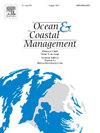Digital monitoring of fish-trade for valuing bycatch and characterizing data-poor fisheries in Tanintharyi, Myanmar
IF 4.8
2区 环境科学与生态学
Q1 OCEANOGRAPHY
引用次数: 0
Abstract
Safeguarding the sustainability of marine fisheries is imperative to food security at both local and global scales. This is a significant issue in countries where the fisheries sector plays a vital role in the economy. In Myanmar, the fisheries sector contributes up to 50 % of the animal protein for human consumption in addition to providing a livelihood for large numbers of fishers in coastal communities. However, managers in Myanmar have inadequate data for regulating coastal fisheries. To help address these data deficiencies, we implemented a digital catch data collection system to quantify the diversity and volume of catches coming from the inshore fisheries of southern Myanmar. Our data from the Tanintharyi region showed a high diversity catch (49 fish families), with commercial transactions greatly dependent on a few key families (e.g., Scombridae, Carangidae) for local and regional trading. We also identified the importance of tonguesoles (Cynoglossidae), frequently caught as bycatch, as an essential contribution to the local food supply. Tonguesoles are unreported and unregulated but are of high socio-economic importance, providing a source of affordable, high-quality protein and income to coastal communities. Here we use Cynoglossidae as an example of a single fish family that can be used to make general management recommendations for a poorly understood but highly diverse inshore fishery in Myanmar. An ecosystem approach to fisheries management (EAFM) is suggested for the tonguesole and related mixed-fisheries to ensuring long-term sustainability of fisheries, food security, biodiversity, other ecosystem services, and safeguard coastal livelihoods across the large coastal area of Myanmar.
对鱼类贸易进行数字监测,以评估副渔获量,并描述缅甸坦宁达伊缺乏数据的渔业
保护海洋渔业的可持续性对地方和全球的粮食安全都至关重要。在渔业部门在经济中发挥重要作用的国家,这是一个重大问题。在缅甸,除了为沿海社区大量渔民提供生计外,渔业部门还为人类消费贡献了高达50%的动物蛋白。然而,缅甸的管理人员没有足够的数据来管理沿海渔业。为了帮助解决这些数据缺陷,我们实施了一个数字捕捞数据收集系统,以量化缅甸南部近海渔业的捕捞多样性和数量。我们从Tanintharyi地区获得的数据显示,该地区的渔获具有高度的多样性(49个鱼类科),商业交易在很大程度上依赖于几个关键的鱼类科(如Scombridae, Carangidae)进行当地和区域贸易。我们还确定了舌鱼(舌鱼科)的重要性,它经常作为副渔获物被捕获,是当地食物供应的重要贡献。舌舌没有报告和管制,但具有很高的社会经济重要性,为沿海社区提供负担得起的高质量蛋白质和收入来源。在这里,我们以Cynoglossidae作为一个单一鱼类家族的例子,可以用来为缅甸一个鲜为人知但高度多样化的近海渔业提供一般管理建议。为确保渔业、粮食安全、生物多样性和其他生态系统服务的长期可持续性,并保障缅甸广大沿海地区的沿海生计,建议采用生态系统渔业管理方法(EAFM)对舌鱼和相关混合渔业进行管理。
本文章由计算机程序翻译,如有差异,请以英文原文为准。
求助全文
约1分钟内获得全文
求助全文
来源期刊

Ocean & Coastal Management
环境科学-海洋学
CiteScore
8.50
自引率
15.20%
发文量
321
审稿时长
60 days
期刊介绍:
Ocean & Coastal Management is the leading international journal dedicated to the study of all aspects of ocean and coastal management from the global to local levels.
We publish rigorously peer-reviewed manuscripts from all disciplines, and inter-/trans-disciplinary and co-designed research, but all submissions must make clear the relevance to management and/or governance issues relevant to the sustainable development and conservation of oceans and coasts.
Comparative studies (from sub-national to trans-national cases, and other management / policy arenas) are encouraged, as are studies that critically assess current management practices and governance approaches. Submissions involving robust analysis, development of theory, and improvement of management practice are especially welcome.
 求助内容:
求助内容: 应助结果提醒方式:
应助结果提醒方式:


